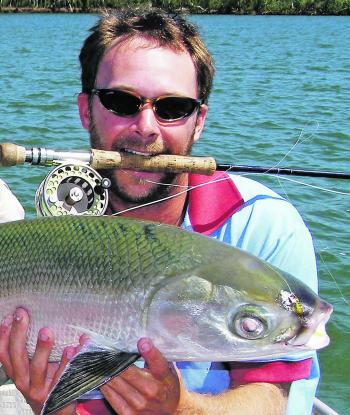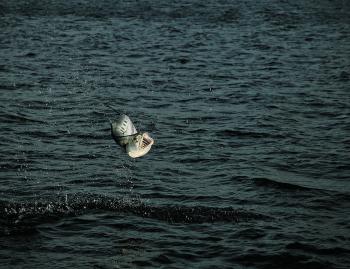Cape York is a traveller’s paradise in June. The days are cool in the mornings, cool in the evenings and warm throughout the day. Topped off with some great fishing, who could ask for anything more!
Anglers on the west coast will be taking advantage of the offshore winds this time of year. The predictable southeast trades have begun, blowing things flat calm on any shore facing northwest.
Flats fishing down the western coast of Cape York is a truly memorable experience with the sun rising across your shoulders, out over bays and creek mouths and long, long stretches of sandy beach. Anglers armed with either fly gear or light spin gear are in for a treat.
A concentration of rivers on the northwest coast is world famous for the flats fishing on offer. Crystal clear creeks and river mouths make polarizing easy for iconic sportfish such as queenfish, permit, giant herring, milkfish, barramundi, tarpon and a host of trevally species.
Fly fishers relish this type of fishing because it’s a great opportunity to stretch the arms right out, casting long loops with a gentle breeze from behind. Making casts at often grey, indistinguishable ghosts as the cruise past, hoping to get a turn once your crab, prawn or baitfish imitation touches down. When the fish are hungry, they get a whole lot less picky.
Fishing a gentle incoming tide in this part of the Cape will bring a host of predators back into the estuarine system from the gulf. Anglers can position themselves in clear, shallow water, looking for cruisers – just remember to be crocodile smart. Predators take advantage of the low light conditions to push further up on the flats. Dawn, dusk and overcast skies can actually be productive periods up on the flats, although conditions make sight fishing more tricky.
For the spin fisher, something loaded with 15lb braid and ready to cast a mile is what’s required. Small metal slices, poppers, soft plastics, vibes and shallow divers all have their moment in the sun. Leaders should be kept as light as the fishing and conditions allow.
Further down the west coast, south of Mapoon and north of Aurukun are many more flats, beaches and red-cliff hotspots. All the same species are down in this area, and barramundi become more prolific and threadfin salmon will also come into the mix.
Manta-rays will be active in the clear waters just off the beaches along this northwest coast. There’s great success each year from anglers casting behind these huge black creatures, picking up cobia and golden trevally hanging off the back.
Some thick bait balls will be gathering down the inshore areas of the west coast. Sporadic feeding frenzies of longtail tuna, mackerel, queenfish and trevally can be seen busting up all over the place on calm June mornings.
Those who are out and about at the crack of dawn will be rewarded for their efforts.
• For information on remote charter operations for tailored fishing adventures, please email Tim on --e-mail address hidden--
Reads: 2047

The many shades of blue on Cape York's east coast. 
Cape York's east coast from the air. 
Big milkfish taken during a June worm hatch. 
The big queenies will be around in June. Matched Content ... powered by GoogleLatest Articles

Most Popular |
|---|



